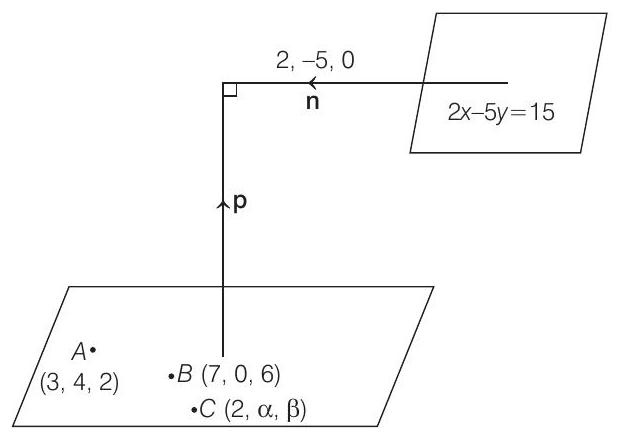3D Geometry 3 Question 19
19. If the point
(2019 Main, 11 Jan II)
(a) 17
(b) 7
(c) 5
(d) 12
Show Answer
Answer:
(b)
Solution:
- According to given information, we have the following figure.

From figure, it is clear that
Now, as the planes are perpendicular, therefore






